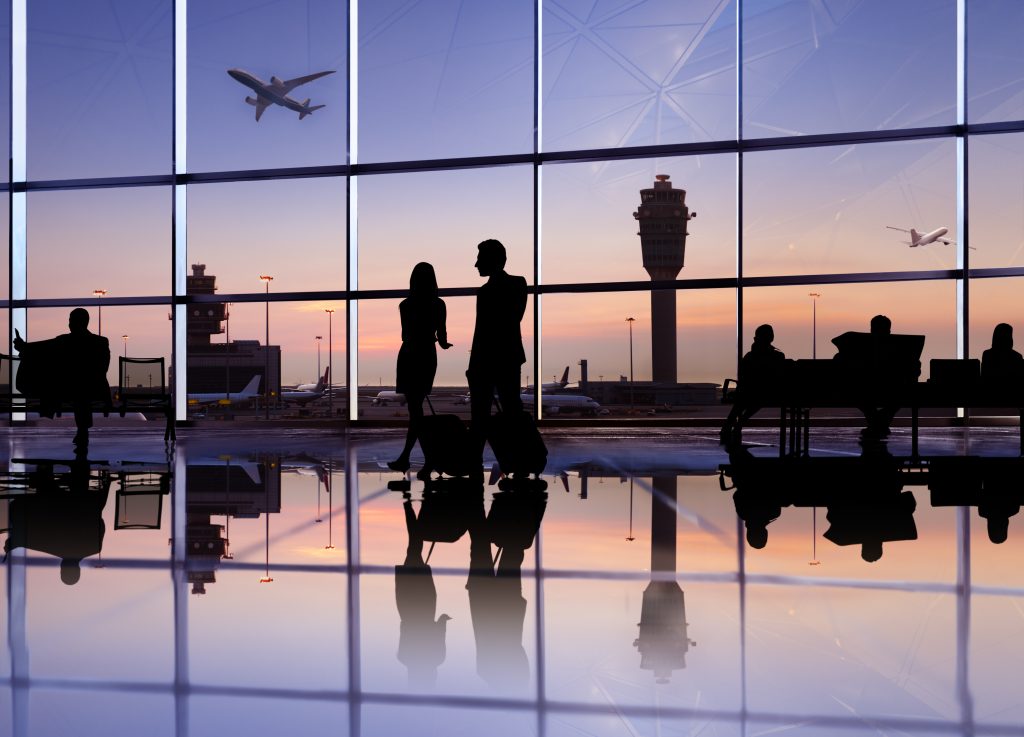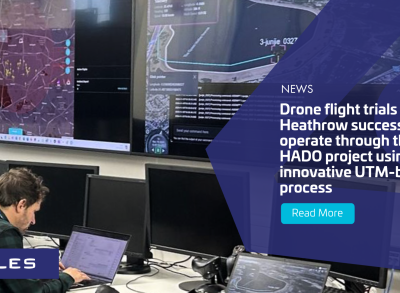Going with the flow: Orchestrating airport traffic, safely and efficiently

Airports are like cities. For city dwellers to be able to enjoy a good quality of life as they navigate through the streets, pedestrian crossings and passages must be designed to enable safe and efficient pedestrian transit. Similarly, city traffic must be carefully orchestrated and designed to facilitate safe and seamless flows. And for this orchestration to happen, all responsible authorities must collaborate.
Airports work in a similar fashion. For passengers to have a good travel experience, their journey from check-in to take-off must be as simple as possible. Similarly, all aircraft, from their descent all the way through to the next take-off, must be carefully orchestrated to ensure safety and avoid delays. And for this orchestration to happen, all responsible authorities must collaborate to maintain 360° flow awareness and control.
Leveraging decades of experience across multiple fields – from Air Traffic Management (ATM) to biometrics and medical imaging – Thales is working to develop solutions that streamline airport operations. From check-in to take-off, Thales aims to ensure that citizens and authorities in ‘airport city’ only have one worry: going with the flow.
From Check-in…
As airports, airlines, international authorities continue to add new requirements and restrictions on air travel, passengers’ constrains start earlier and earlier in their journey. Anyone who had to fly during the Covid pandemic will remember that, in addition to boarding pass, ID and, where necessary, visas, passengers also had to produce negative tests. From check-in all the way to boarding, passengers are required to show boarding pass and passport at several check points.
For Thales, this issue goes beyond the nuisance for passengers as they journey through an airport. It is also a matter of ensuring a good passenger flow, so that the airport – and all its eco-system of employees, checkpoints and shops – can function as smoothly as possible.
Thales’ Fly-to-Gate solution has been designed to streamline passenger flows throughout the airport. It allows passengers to create a digital ID token – at home on their mobile phones or at dedicated airport kiosks – that includes their passport details, their boarding pass and a facial scan. This ID token is then transmitted to airport authorities and/or airlines, so that at every check point passengers simply have to use facial recognition where they would have previously had to show passport and boarding pass – typically at check-in, at security, boarding and potentially also border control.
Fully encrypted and functioning on the basis of passenger consent, Fly-to-Gate presents two key benefits.
For passengers, it allows them to journey through the airport without having to worry about producing the required documents multiple times. This greatly reduces the stress caused by constantly searching for and producing the papers and by the waiting lines these ID checks inevitably create. The ID token is deleted from the system once the flight has taken off, but passengers with a digital wallet can connect the same token to future flights. As such, Fly-to-Gate greatly enhances security both for passengers – who retain control over their data – and airports – reducing the risk of fraudulent activity.
For airports and airlines, this solution smooths passenger flows, creating a less stressful experience from check-in to boarding.
… Through security…
Much like the Covid pandemic’s impact on check-in processes, the early noughties’ surge in terrorist threats significantly impacted security checks. Limits on liquids containers, requirements to remove items from bags or items of clothing – such as jackets, shoes, etc – all contribute to increasing passenger anxiety and creating long waiting times. For airports, this has also caused additional personnel stress, with ever more vigilance required, particularly at peak times.
Cognisant of the burden the security process places on both personnel and passengers, Thales is currently developing a new scanner that will bring benefits to both airports and passengers: HELIXVIEW.
Built leveraging technologies and know-how from different areas across Thales, HELIXVIEW is a compact and light scanner – half the weight of most existing scanners – that uses stationary X-ray technology to build a 3D image of each item being scanned. The image is then processed through an algorithm designed to detect dangerous objects and materials, as per the Explosive Detection System standard C3 progressively being rolled out in airports around the world.
For passengers, HELIXVIEW will greatly facilitate their security experience as they will no longer need to take anything out of their bags. For airports, this will not only smooth passenger flow at security checks, but it will also reduce the system’s footprint – the stationary X-Ray technology allows a design that features a tray return belt under the main belt without the scanner elevation – and increase security. Finally, this will also significantly improve the quality of the working environment for security personnel.
… All the way to take-off…
Flight safety begins at push-back. It begins with ensuring total situational awareness on the tarmac, from aircraft landing, taxying and taking-off to service vehicles and everything in between. Flight safety is also about efficiently and safely orchestrating all the aircraft in and around the airport, because the slightest incident or misunderstanding can lead to airport disruptions, flight delays or, in the worst-case scenario, fatal accidents.
With decades of experience ensuring safe and efficient ATM around the world, Thales has developed a complete portfolio of solutions designed to ensure flight safety – from push-back to landing.
The Air Traffic Control (ATC) portfolio of solutions includes systems designed to facilitate traffic flow management and sequencing. By orchestrating all aircraft movements in and around an airport’s airspace, Thales addresses three key issues. Firstly, it guarantees flight safety, the primary aim of ATM. Secondly, it sequences air traffic on land and in the air so as to avoid holding patterns around the airport and long queues of aircraft waiting to take-off. Thirdly, it contributes to a greener aviation sector, since the optimisation of operations reduces fuel consumption – both on land and in the air.
The Navigation Aids (NAVAIDS) portfolio features a range of solutions designed to ensure safe navigation whatever the weather or the conditions in or around the airport.
Finally, the global surveillance portfolio comprises Thales’ airport sensor solutions. These range from radar to ADS-B and multilateration systems, all developed to gather the most accurate information regarding aircraft position and heading. These systems have also been designed to provide wider area surveillance for customers with coastal airports.
As Unmanned Aerial Vehicles (UAV) increasingly become part of air traffic, they are also becoming an issue for safe aviation. A few incidents around the world have already revealed the impact these systems can have on the functioning of an airport. Choosing to get ahead of the issue, Thales has already been testing a number of systems aimed at UAV Traffic Management (UTM) as well as Counter-UAV (C-UAV). Although offered separately, Thales believes that UTM and C-UAV systems should work together, because detecting a foe is much faster and easier when friends are already known.
… Always keeping track.
For airport traffic flows to be carefully orchestrated, responsible authorities must be able to have all relevant information. It must be elaborated from real-time data, and they must be able to share it across different airport key actors. Because if passengers have a seamless journey through the airport but are then forced to wait at gates or on planes on the tarmac, then does that not defeat the purpose?
Sharing information across several actors focused on different areas, however, is no easy feat. At any given time from check-in to boarding, data about luggage handling and passenger flows is created. And at any given time within an airport, data about ground transportation and airplane movements flashes on different monitoring screen. Yet most systems handling such data do not communicate with each other.
That is why Thales has developed two systems aimed at enhancing airport authorities’ situational awareness and support them in finding solutions to recurring or potential problems.
Through ShareView, a software designed to gather information from all legacy systems in an airport, Thales will provide authorities with the ability to have an overarching vision of the airport’s functioning. KPIs are defined to feed a dashboard – designed by the customer according to their needs – that provides a real-time performance picture – baggage handling, passenger flows, etc. A tactical map is also available to have a more spatial representation of where problems may be emerging.
Efficient passenger traffic flow management starts with knowledge about traffic patterns and passenger habits. With InFlow, Thales has designed a tool that allows airports to analyse passenger flows, draw conclusions and therefore make better predictions and planning. The integrated simulation tool also allows airport authorities to understand the potential impact of any decision taken to address any emerging situation, thus minimising disruptions for passengers and airlines.




